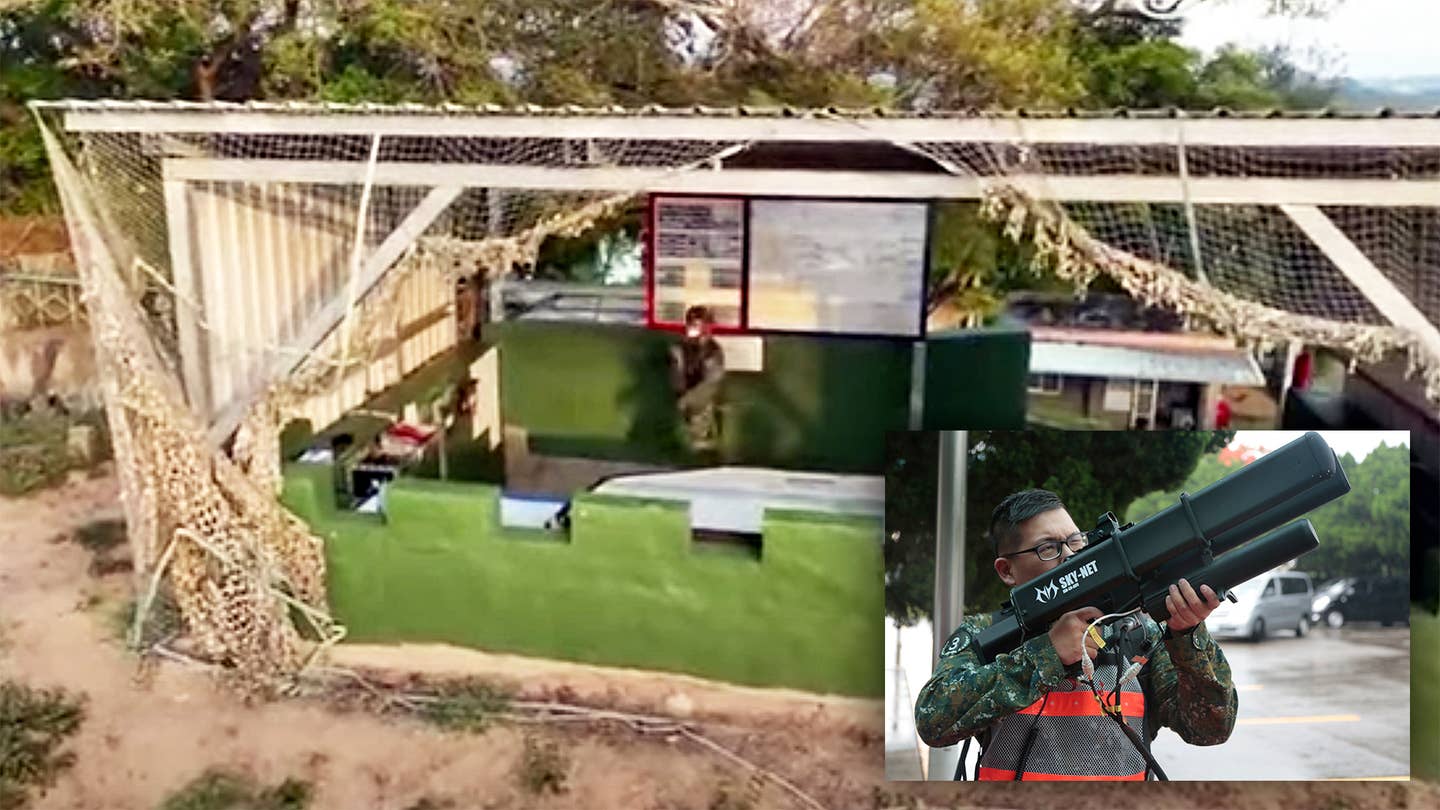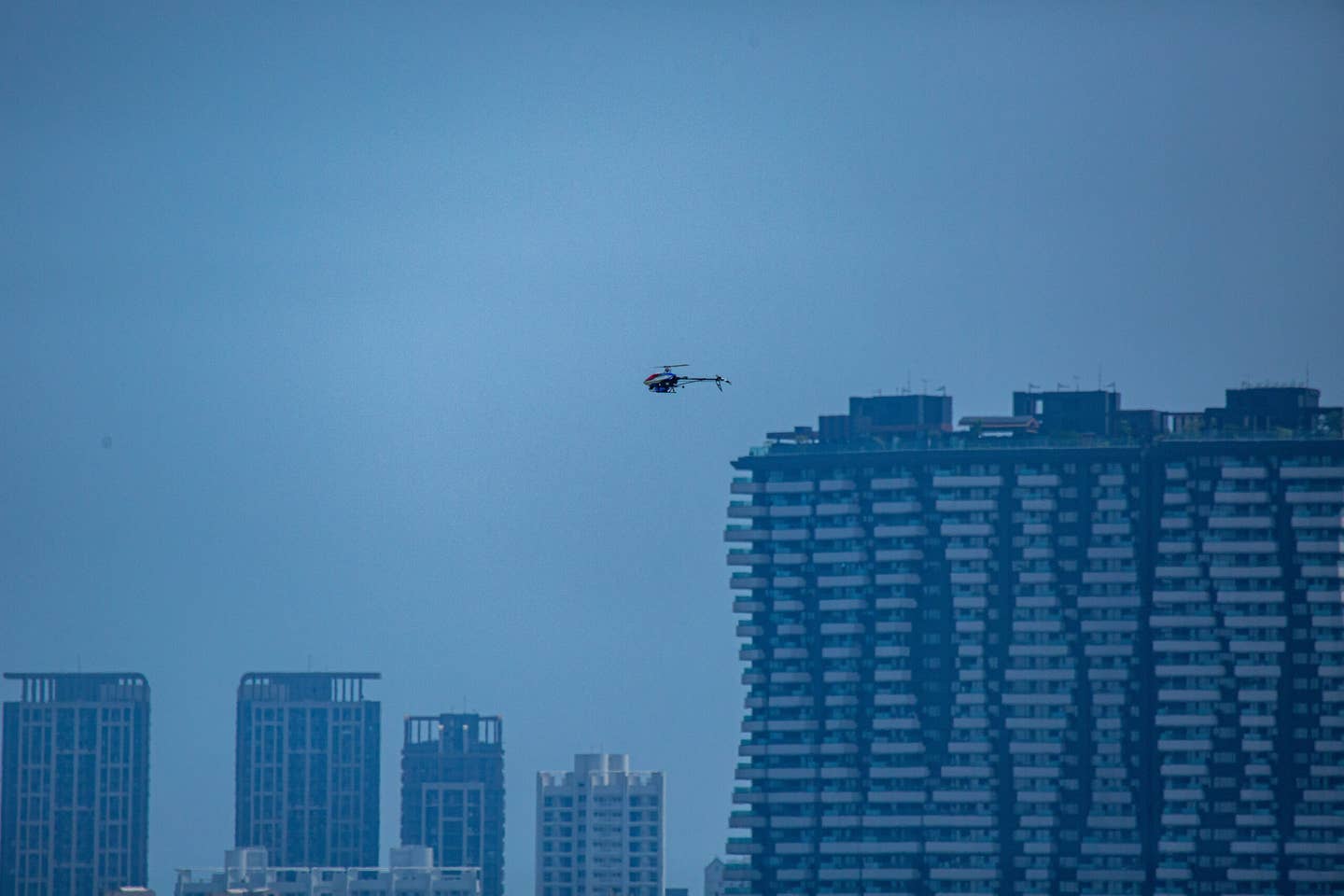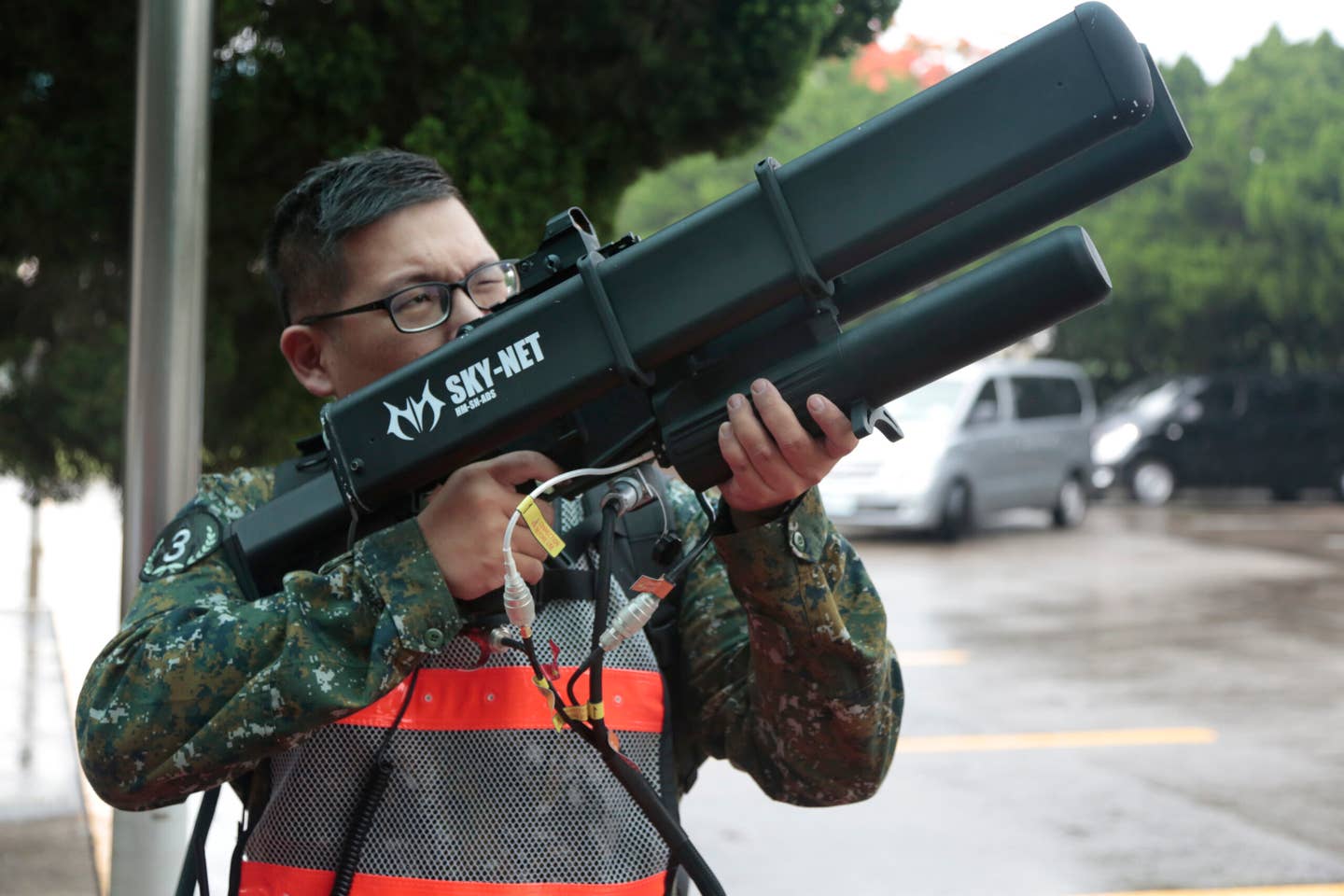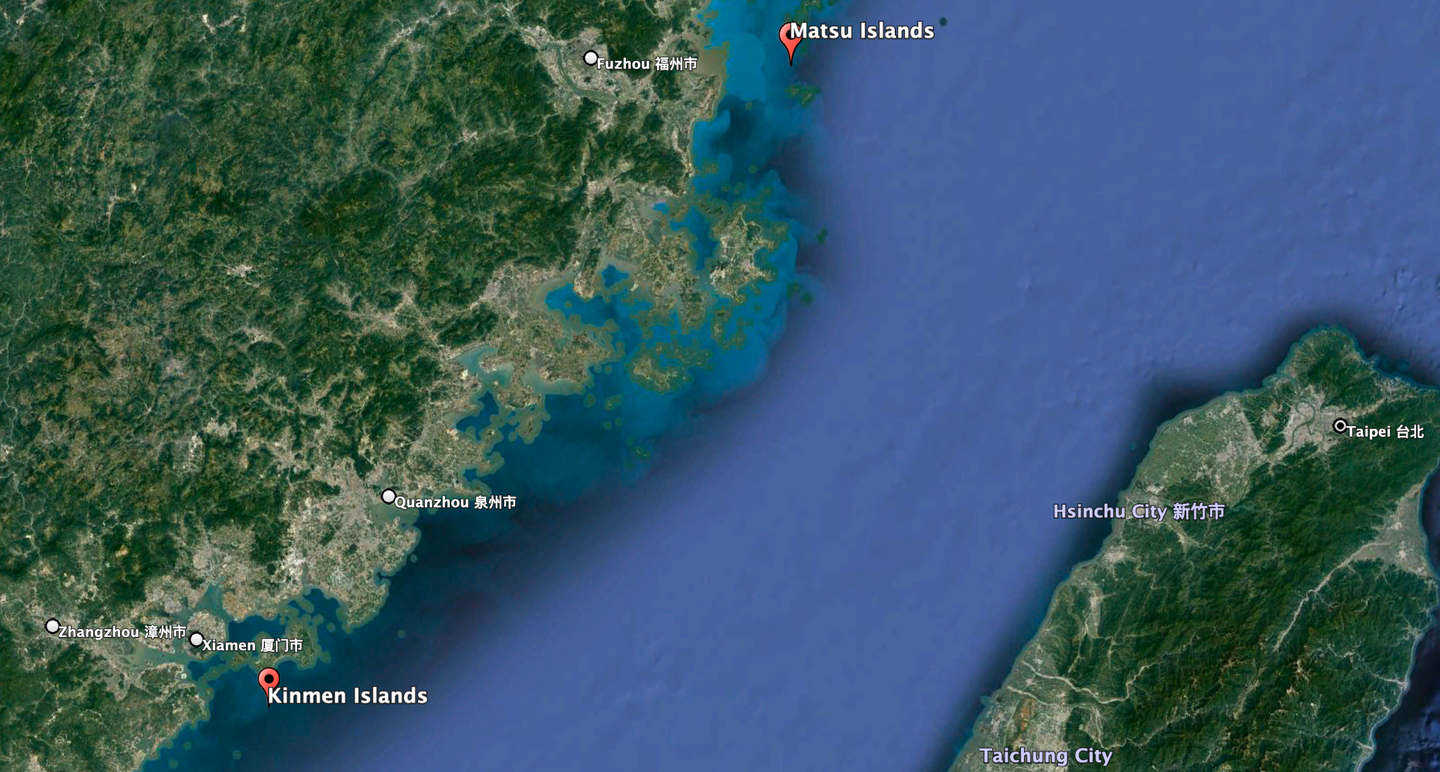THOMAS NEWDICK

As its next move in the fast-developing challenge of Chinese drone incursions, the Taiwanese military has reportedly confirmed that it will, in the future, shoot down unmanned aerial vehicles that don’t respond to its warnings. The move comes after authorities on the self-governing island said they would deploy undisclosed domestically developed drone defense systems across its territory, which followed a highly public encounter between a Chinese drone and two Taiwanese soldiers, as you can read about more here.
According to a report from Taiwan News, Taiwan’s Ministry of National Defense yesterday announced that its forces would “shoot down intruding Chinese drones that fail to heed warnings.” Exactly what type of drone defense system is planned to be used in such scenarios is unclear, although The War Zone has already looked at some of the possible candidates.
 A military drone during the Taiwanese Han Kuang military exercise, which simulates China’s People’s Liberation Army invading the island, on July 27, 2022, in New Taipei City, Taiwan. Photo by Annabelle Chih/Getty Images
A military drone during the Taiwanese Han Kuang military exercise, which simulates China’s People’s Liberation Army invading the island, on July 27, 2022, in New Taipei City, Taiwan. Photo by Annabelle Chih/Getty ImagesWhat we do know is that the rules of engagement, as described, call for the Taiwanese military to act against drones in its airspace only after they ignore other measures to “drive away” the unmanned aerial vehicles. These include “sounding whistles, broadcasting radio warnings, and firing signal flares.” The last of these is something that Taiwan has done fairly regularly since the current wave of drone incursions began in July. As for the other two, it’s highly questionable if these would affect the small, likely commercially available drone types that seem to have been encountered over Taiwan’s outlying islands. It is unlikely that UAVs of this type would be transmitting live audio let alone be equipped with radios able to transmit and receive voice communications.
It should also be noted that while the Ministry of National Defense reportedly mentioned shooting down the rogue drones, this may not involve using a gun, missile, or even a net-based system to capture it. A range of other non-kinetic options are available that could similarly disable a UAV and cause it to crash.
 A Sky Net anti-drone gun of the Republic of China Air Force during an anti-invasion drill in Chang-Hua, Taiwan, in May 2019. Photo by Patrick Aventurier/Getty Images
A Sky Net anti-drone gun of the Republic of China Air Force during an anti-invasion drill in Chang-Hua, Taiwan, in May 2019. Photo by Patrick Aventurier/Getty ImagesAlso of particular interest is the fact that the latest announcement refers specifically to Taiwan’s outer islands, rather than the main island, around which Chinese manned aircraft of different kinds now also more regularly operate.
In particular, Chinese drone incursions have been taking place over the islands of Kinmen, also known as Quemoy, as well as the Matsu Islands. At their closest points, these are only around six miles from the coast of mainland China, but around 100 miles from the main island of Taiwan, making their defense extremely problematic. They have also long been the focus of Chinese military activity at times of tension, up to and including artillery bombardment. With the close proximity of these islands to the mainland, they would likely be among the first to be seized in a wider conflict with Taiwan, or they may even be taken as part of a separate operation.

A map showing the general locations of the islands of Kinmen and Matsu, just off the coast of mainland China. Google Earth
That the Kinmen Islands, in particular, are experiencing a Chinese drone ‘problem’ had become abundantly clear by August 16, when a drone appeared over the Lieyu Garrison Battalion on one of the islands of Kinmen.
The drone was variously described as belonging to the Chinese People’s Liberation Army (PLA) or Chinese civilians, but Taiwan’s Ministry of National Defense confirmed that imagery filmed from the drone, which showed its sentries throwing rocks or other objects at the UAV, was genuine.
The Kinmen Defense Command told Taiwan News that the drone “quickly flew away.”
Since then, however, more video has emerged showing another similar incident, also at a military lookout post in Kinmen’s Lieyu Township.
Again, first appearing on the Chinese Weibo social media platform, this video emerged on August 27 and shows Taiwanese troops scrambling to respond to the drone’s appearance. Soldiers are seen speaking into radios and pointing at the drone.
The Kinmen Defense Command again said that the drone involved was a civilian model, and that warning flares were fired at it. However, as we have observed before, an apparently civilian drone doesn’t rule out at least some kind of connection to the Chinese military or intelligence services.
The Kinmen Defense Command has also confirmed 23 intrusions by Chinese drones over Kinmen County since the controversial visit to Taiwan by U.S. Speaker of the House Nancy Pelosi at the beginning of this month.
Incursions even by smaller unmanned aircraft could threaten sensitive areas on the islands of Kinmen and Matsu, both in peacetime and in a range of different conflict scenarios. At a basic level, their missions could include various types of surveillance, including testing reactions and response times of the defending Republic of China Armed Forces. At the same time, repeated incursions could also serve to tie up Taiwanese resources while providing a low-cost propaganda tool, apparently undermining Taiwanese defense efforts on the islands and highlighting their vulnerability to a Chinese invasion.
In a time of war in the Taiwan Strait, the PLA would almost certainly make use of its many different drone types and even smaller craft could potentially play a useful role, especially during the open stages of a conflict. They could be especially useful in efforts to degrade air defense systems that might be deployed on the islands, achieved both through the drone’s weight of numbers, kinetic effects, and potentially through jamming.
The very public nature of some of these recent incidents could well have prompted, in part, the Ministry of National Defense’s announcement of harsher measures against drones, although we don’t know when these are likely to start being enforced. Indeed, the ease with which these drones have apparently threatened the security of Taiwanese military facilities has resulted in much discussion, including about the seriousness of Taipei’s plans to defend the outlying islands against potential Chinese aggression.
No comments:
Post a Comment